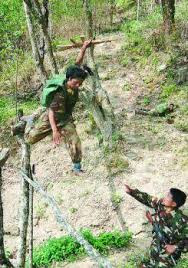The immediate cause of the Kuki-Zomi conflict was the June 24, 1997 Saikul incident. 11 Zomi innocent villagers were lined up and killed by the Kuki National Front (President), a Kuki insurgent group. Following this, violence erupted in the entire district.
Prior to 1997, Churachandpur was probably the only peaceful district in Manipur. It was a peaceful and harmonious society with fast-paced accelerated development in terms of education and commerce. The residents were proud and felt secure in their environment. However things would never be the same again after the summer of 1997. The early 1990s saw an increase in the population of the Kukis who have been seeking refuge in the district from the Nagas with whom they were fighting since long. Different factions of the Kuki arm groups started extorting moneys, kidnapping businessmen, beating up young men in the streets of Lamka and the surrounding villages like Singngat.
These Kuki arm groups were basically imposing the name “Kuki” as the nomenclature of the Chin-Kuki-Mizo clan, while mainly the Paite tribe disowned the imposed name. The period also saw an increasing popularity of Zomi-centric identity consciousness leading to the formation of notably the Zomi Re-unification Organisation and its armed wing Zomi Re-unification Army.
The “Zomi” nomenclature is accepted by the Zous, the Simtes, the Vaipheis, the Paites and the Tedim-Chin tribes
The Zomis were protecting and safe guarding their habitat, freedom, security and their pride and expected the newcomers to respect these.
Tensions grew between the Zomis and the Kukis and the lack of proper communication and suspicion finally led to their conflict in the summer of 1997, resulting in thousands of people being displaced, killed, maimed, handicapped and even raped.







No comments:
Write comments